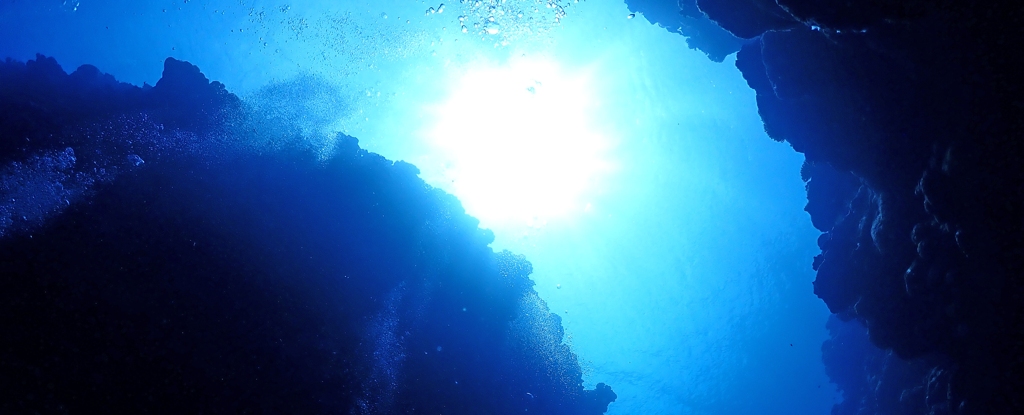A major solution to the climate crisis may lie at the bottom of the ocean.
Across the planet, basalt rock deposits on the sea floor have the potential to trap carbon dioxide, removing the heat-trapping gas from our atmosphere.
That’s why a team of scientists wants to build floating rigs at strategic offshore locations. Rather than extracting oil from the ocean floor – as offshore rigs currently do – these futuristic platforms would be injecting CO2 into it.
Powered by their own wind turbines, the floating stations would suck carbon dioxide out of the sky (or even out of seawater) and pump it into holes in the sea bed.
The scientists call their project Solid Carbon because, if it works as they expect, the CO2 they inject will forever be rock at the bottom of the ocean.
“That makes carbon storage very durable and very safe,” Martin Scherwath, a geophysicist working on the project and a staff scientist at Ocean Networks Canada, told Business Insider.
Unlike other storage techniques, we wouldn’t have to worry about carbon returning to the atmosphere and raising global temperatures.
It’s not yet certain whether these oceanic carbon-removal factories would work as expected. First, the scientists need about $60 million to test a prototype at sea.
How the bottom of the ocean could remove carbon from the sky
The scientists estimate that, worldwide, basalt rock could permanently store more carbon than all of Earth’s fossil fuels can emit. Just look at this map of potential sites across the planet, marked in yellow.
That doesn’t mean it’s safe to keep burning fossil fuels indiscriminately. This strategy is unlikely to be technologically, politically, and economically feasible in every location on the map. It will also be slow and expensive to scale up.
Still, the scientists say just a few rigs could make a big difference. In the Cascadia Basin off Canada’s west coast, near Vancouver Island, there’s room for about 20 years’ worth of global carbon emissions, according to Scherwath. That’s where they hope to conduct a field test.
“The reason that that location is so appealing, is that it’s probably the spot on the globe where we know the most, have the most data, the most scientific expeditions, the most studies about the nature of the ocean crust,” David Goldberg, a geophysicist and professor of climate science and carbon management at Columbia University, who’s been developing this idea since 1997, told BI.
The plan rests on a chemical reaction that already occurs naturally. Basalt rock is highly reactive, full of metals that readily grab CO2 and chemically combine with it to form carbonate minerals.
The basalt also tends to be broken up and porous, leaving plenty of room for new carbonates to fill in.
In Iceland, a project called CarbFix has proven a small-scale version of this process, dissolving CO2 in water (yes, that’s sparkling water) and injecting it into underground basalt.
Within two years, the CO2 gas mineralizes, becoming rock deep underground.
The final stretch of reversing climate change
These oceanic carbon-storing factories would be a giant and costly undertaking – exactly the kind of mega-project we may eventually have to resort to if we want to cool the planet back to pre-industrial temperatures.
“We have to come up with the money. I don’t think there’s a way around it,” Scherwath said.
That said, Solid Carbon is no substitute for the basic, immediate measures that climate experts worldwide are calling for, including swapping fossil fuels for renewable energy and reducing the carbon emissions of our food systems.
Rather, Scherwath says this is one of our later carbon-capture options, decades from now, to shave off the last few tenths of a degree of global warming. To have the option, though, we need to start developing it now.
According to one report from the National Academies of Science, Engineering, and Medicine, the world may need to draw down 10 billion tons of CO2 each year in order to reach net zero emissions by 2050 and have any chance of restricting global warming to the targets set forth in the Paris Agreement.
To reach that goal, “you’re gonna need every last drop,” Goldberg said.
That can include restoring ecosystems that naturally store carbon, like forests and wetlands, as well as capturing CO2 straight from the atmosphere and storing the gas underground in depleted oil and gas reservoirs.
The trouble with those methods is the carbon could escape, via forest fires or seeping up through abandoned oil wells.
Solid Carbon scientists say carbon rock is stuck on the sea floor for thousands of years. They also argue that in the ocean, there’s plenty of room to scale up and little risk of disgruntled neighbors fighting the project.
“This is a good compliment to the other methods, but it’s also the most expensive one,” Scherwath said.
Seeking $60 million
The Solid Carbon demo would send out a ship with pre-captured CO2, drill a hole in the sea floor, and inject it there. They would use an existing cable network to monitor the site and check for any escaping gas.
The trouble is funding. The group has applied for federal grants in the US and Canada, as well as foundations, according to Goldberg. So far they’ve been unable to secure the $60 million they need to run the pilot.
Goldberg suspects that’s partly because there’s no clear way to make money from capturing carbon and shooting it into the bottom of the sea.
“I mean, climate change is so expensive,” Scherwath said. “The way to think about it might be similar to sewage treatment in cities, like it has to be done.”
If they had the money, Goldberg thinks they could start running the pilot in a year or two.
This article was originally published by Business Insider.
More from Business Insider:











/https://tf-cmsv2-smithsonianmag-media.s3.amazonaws.com/filer_public/34/31/3431771d-41e2-4f97-aed2-c5f1df5295da/gettyimages-1441066266_web.jpg)






Discussion about this post